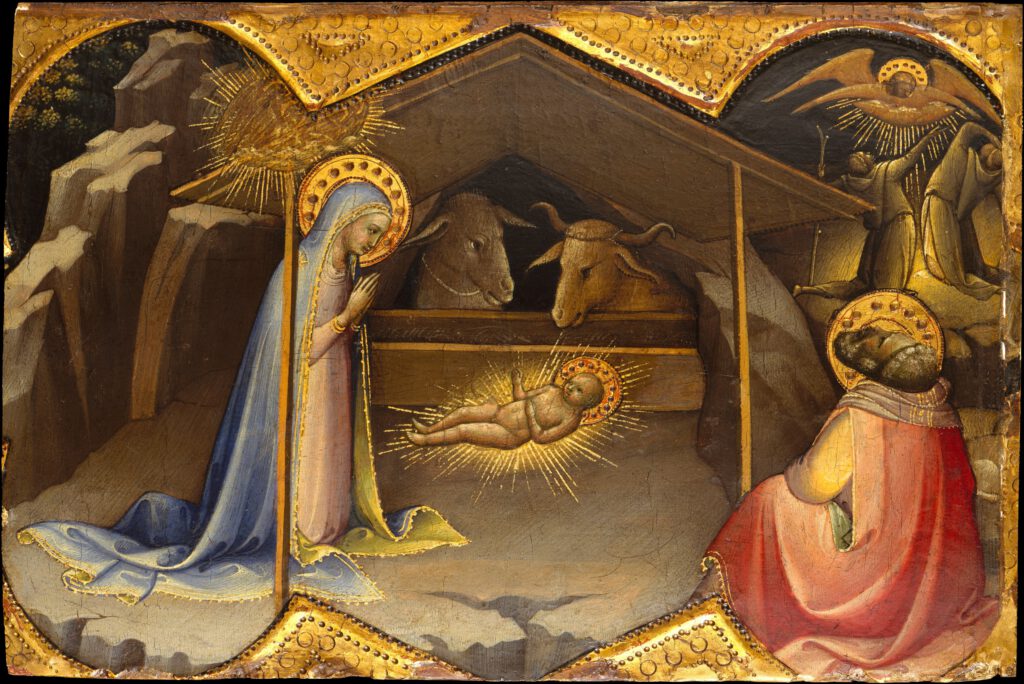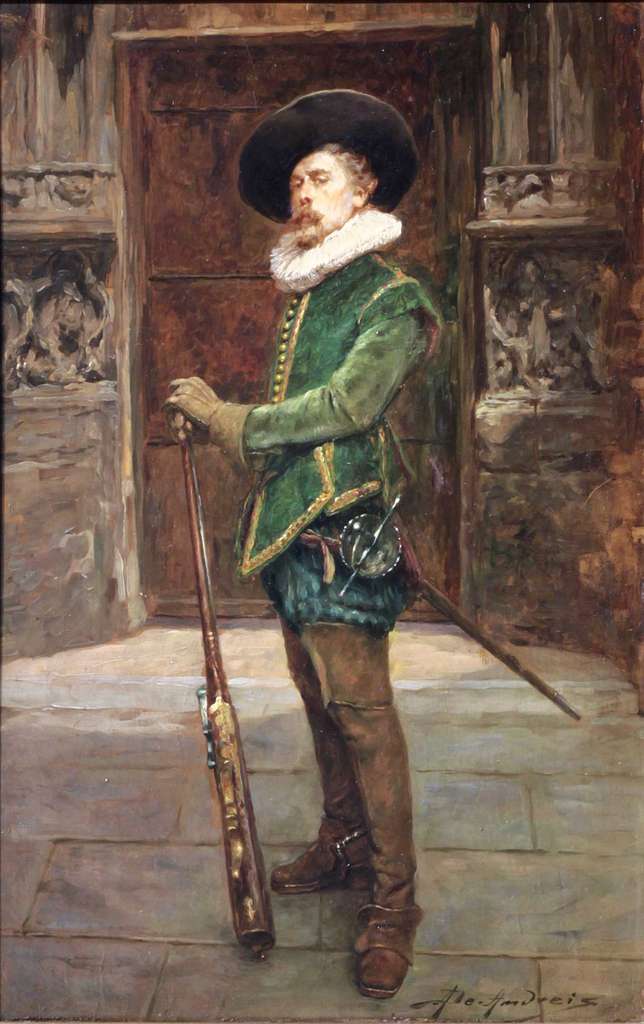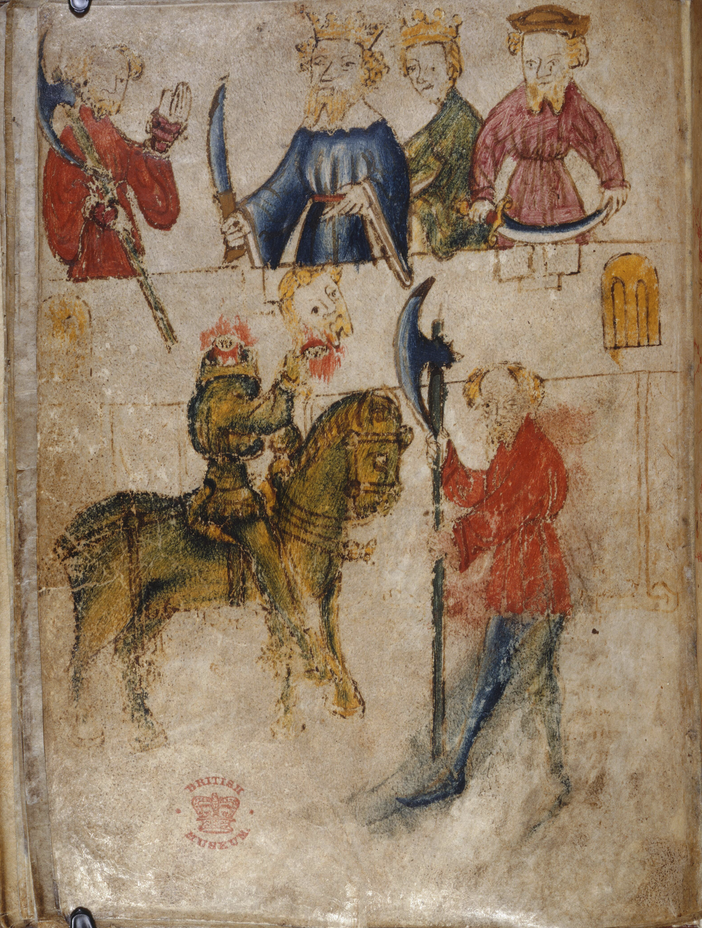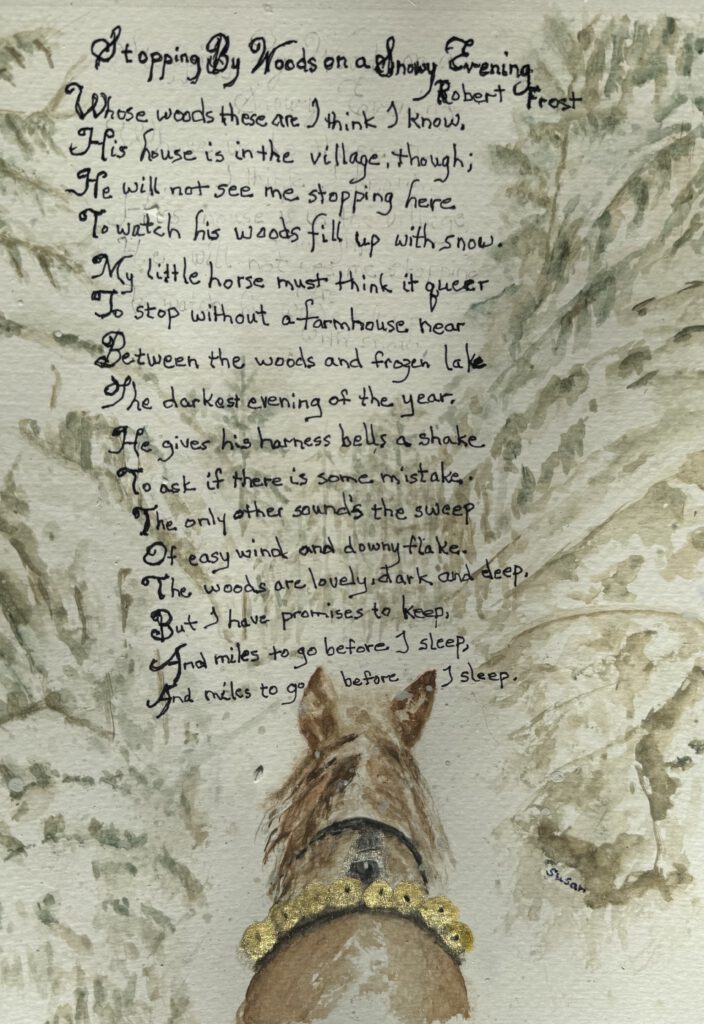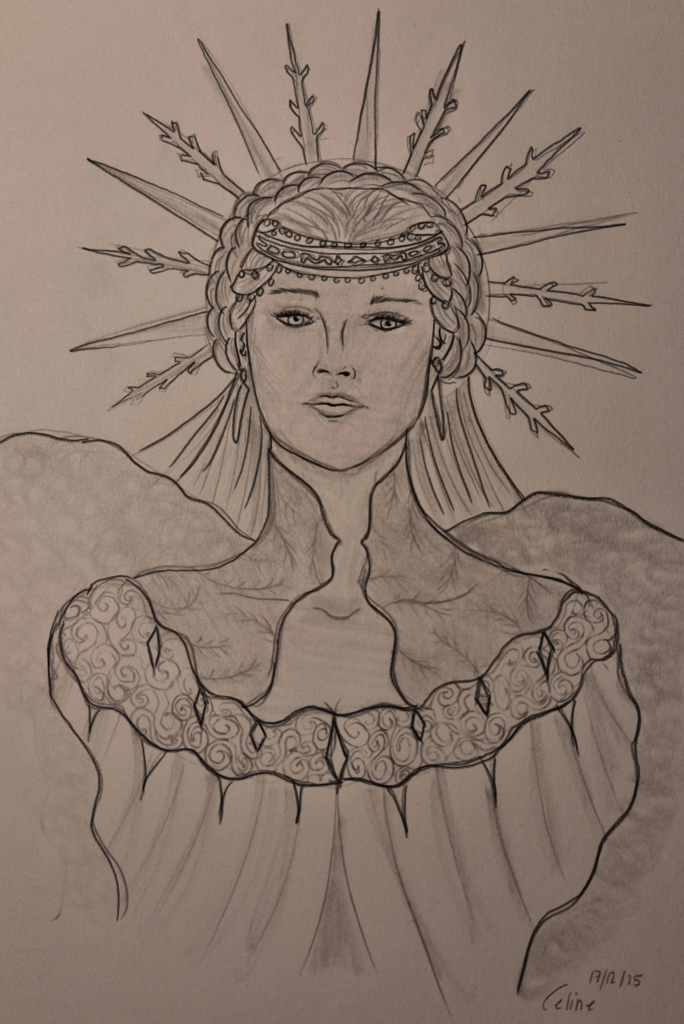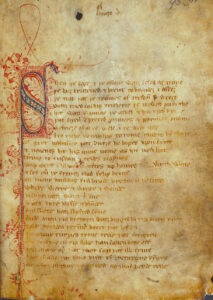Annotation as an Embedded Textual Practice: Analysing Explanatory Notes in Three Editions of Dr Jekyll and Mr Hyde
Lena Linne and Burkhard Niederhoff
Published in Connotations Vol. 29 (2020)
Abstract
The present article has two parts. The first part (sections 2 to 5) compares and reviews the explanatory notes in three recent editions of R. L. Stevenson’s Strange Case of Dr Jekyll and Mr Hyde. The editors are Richard Dury (Edizioni C. I. Genova 1993), Katherine Linehan (Norton 2003), and Roger Luckhurst (OUP 2006). The three sets of notes differ considerably in number, length, choice of lemmata, and style. They also differ in the kinds of comment they offer. All three annotators provide problem-solving notes that paraphrase difficult words, trace quotations, or explain topical references. Luckhurst and Dury, however, also write interpretive notes that point out symbols and thematic patterns. While some of these interpretive notes are illuminating, others are distracting or misleading. Interpretive annotation is also questionable because it cannot be carried out in a consistent and exhaustive fashion.
The second part of the article (section 6) underpins our scepticism about interpretive annotation with a more general argument. This argument is based on a distinction between the critical essay on the one hand and annotation on the other. While the critical essay is a response to a literary text and is read independently, reading a note is an embedded activity, subordinate to the reading of the literary text. If reading a literary text may be compared to a journey, consulting a note is like a detour in that journey. Consequently, notes should be reader-oriented and self-effacing. They should provide the necessary information succinctly and clearly, making the reader’s detour in his or her textual journey as brief as possible. Annotators who take this approach will focus on the problem-solving notes and avoid free-wheeling and speculative interpretation.
1. Introduction1)
The aim of the present article is to provide a “rationale of annotation,” to quote the title of an essay by Martin Battestin, with whose restrictive views on the subject we are in agreement. Our thinking about annotation is based not only on scholarly articles by Battestin and others; it is also informed by the fact that we have been researching and writing notes for an edition of six early short stories by Robert Louis Stevenson.2) However, we have decided not to refer to these notes—fabricating the evidence for one’s own claims is a questionable procedure. Instead, we will base our argument on three annotated editions of Stevenson’s novella Strange Case of Dr Jekyll and Mr Hyde. We will first analyse, compare and review the explanatory notes in these editions and then, in the final section of this article, connect our findings with a more general and theoretical argument about annotation as an embedded textual practice.
2. Three Editions of Dr Jekyll and Mr Hyde: A Numerical Comparison
For our comparison, we have chosen three editions that are relatively recent, were published at roughly the same time (between 1993 and 2006) and designed for the academic market; they all combine annotation with critical readings and contextual material. The editors are Richard Dury (Edizioni C. I. Genova 1993),3) Katherine Linehan (Norton 2003), and Roger Luckhurst (OUP 2006). At the outset, we would like to state that we have learnt a lot from all their annotations. We will voice some criticisms of their work, especially of one or two notes by Luckhurst, but all three annotators provide many valuable insights into Stevenson’s text.
What is most striking about the notes in the three editions is how much they differ. As our comparison will show, there seems to be little [→ page 50] consensus as to what, how and for whom one should annotate; the three editors select different lemmata (lemma is the word or passage that is the subject of annotation), and they annotate them for different audiences and in different ways. To prove this point, we will begin with some numbers:
| Linehan (Norton) | Luckhurst (Oxford) | Dury (Genova) |
|
|---|---|---|---|
| Number of Notes | 122 | 47 | 311 |
| Lemmata shared by all | 20 | ||
| Exclusive lemmata | 45 | 15 | 231 |
Although the three editors annotate the same text, the number of notes varies extremely: Luckhurst offers 47, Linehan 122, and Dury 311. In other words, Linehan presents more than twice as many notes as Luckhurst, and Dury almost three times as many as Linehan (and hence more than six times as many as Luckhurst). Only twenty lemmata are explained in all three editions, while each features a considerable number of lemmata neglected by the other two. This is hardly surprising in the case of Dury with his 311 notes, but even Luckhurst has an astonishing number of exclusive lemmata: 15 out of 47. Almost a third of his notes focuses on words or passages that neither Linehan nor Dury considers worthy of annotation.
The notes composed by the three editors also differ in length, as is shown by the following table:
|
|
Linehan (Norton) |
Luckhurst (Oxford) |
Dury (Genova) |
|
Words overall (est.) |
2,900 |
3,700 |
16,400 |
|
Words per note (aver.) |
24 |
79 |
53 |
Linehan’s 122 notes amount to approximately 2,900 words, Luckhurst’s 47 to 3,700 and Dury’s 311 to 16,400. Consequently, the average length ranges from Linehan with 24 words per note over Dury with 53 to Luckhurst with 79. Thus, Luckhurst’s notes are, as a rule, about three times [→ page 51] as long as Linehan’s. These differences do not mean that Luckhurst and Dury are more verbose writers than Linehan; they mean that Luckhurst and Dury write notes of a different kind. To substantiate this claim, we have assigned all of the notes from the editions to seven categories, which are listed below. These do not amount to a systematic or exhaustive typology of annotation; they are based on the corpus in question, i.e. the 480 notes from the three editions of Dr Jekyll and Mr Hyde, and their principal purpose is to allow for a comparison between them. With texts from another period or genre or with another kind of argument, a typology of annotation would look different, including additional or fewer categories.4)
(1) Words. This category covers words that are obsolete or otherwise unknown. It also includes obsolete meanings of words that look familiar, such as the adjective “mere” in the following passage, in which Jekyll’s friend Utterson has a sleepless night worrying about the doctor: “It was a night of little ease to his toiling mind, toiling in mere darkness and besieged by questions” (14).14) Linehan annotates “mere” as follows: “Absolute, pure (an obsolete usage which occurs again later in the tale)” (14n1).
(2) Historical and cultural phenomena. This category refers to people, places, events or customs that readers might not know because of the historical and cultural distance between themselves and the world described in the text. It also includes phenomena that are still familiar but have changed in meaning, such as the sum of one hundred pounds mentioned in the opening pages of Dr Jekyll and Mr Hyde. Linehan’s note on the purchasing power of this sum in the late nineteenth century will be quoted below.
(3) Intertextuality. This category comprises quotations, allusions, proverbs and more large-scale literary borrowings.
(4) Parallels and genre conventions. Notes in this category point out similar passages in other works by the same writer or from the same period. During one of his sleepless nights, Utterson thinks about the collision between Hyde and a little girl, an incident that he knows about from his relative Mr Enfield: “Mr Enfield’s tale went by before his mind in a scroll of lighted pictures” (14). Dury’s note, which focuses on the [→ page 52] phrase “a scroll of lighted pictures,” lists parallels in other writings by Stevenson and by George Eliot:
a scroll of lighted pictures: Stevenson was fond of comparing the memory of a story or of events themselves to a series of pictures. After finishing a book, he says, the story should “repeat itself in a thousand coloured pictures to the eye” (1882/Tus.29: 119). “The events of the ignoble day,” he says in The Ebb Tide, “passed before him in a frieze of pictures” (1894/Tus.14: 115). George Eliot also compares successions of thoughts to “magic-lantern pictures” (1871-72/1965: 226) and sequences of pictures in a diorama (1859/1980: 91). (100n1)
Under category no. 4, we have also included genre conventions because they are closely related to parallels. After all, an annotator who wishes to provide evidence for a genre convention will have to list parallels from other texts belonging to the same genre, as is shown by a note from Dury’s edition; it refers to a passage that sets the scene for Utterson’s first encounter with Hyde: “By ten o’clock, when the shops were closed, the by-street was very solitary and, in spite of the low growl of London from all round, very silent” (15). Dury’s note to the words “very silent” identifies a convention of the Gothic tale and illustrates this with two parallel passages from works by other writers:
very silent: clearly marked silence is a typical ‘Gothic’ characteristic for the ‘frame’ of a frightening event. In Walpole’s The Castle of Otranto (1764/1986: 62) there is “an awful silence” in which the steps of the fugitive are echoed. In Le Fanu’s “The Familiar” (1872/1964: 212) Mr Barton walks home alone through streets in “that utter silence which has in it something indefinitely exciting” and which “made the sound of his steps, which alone broke it, unnaturally loud and distinct.” (103n3)
It may not always be easy to tell category no. 4 (parallels and genre conventions) from category no. 3 (intertextuality). If a lemma reminds an annotator of a well-known passage from a canonical work that was published earlier than the work to be annotated, he or she could annotate this passage either as the source (no. 3) or as a parallel (no. 4). In principle, however, the distinction between categories 3 and 4 should [→ page 53] be clear enough. It corresponds to the distinction between “intertextualité” and “architextualité” in Gérard Genette’s typology of transtextuality in Palimpsestes (7-16).
(5) Defamiliarised language. We have included this category to accommodate 44 notes in Dury’s edition. Dury believes that the strange case of Dr Jekyll is presented in a strange style, i.e. that the language of the text is systematically defamiliarised, and he points out many instances of this. Notes of this type will be discussed below in the section on Dury; they do not occur in the other two editions.
(6) Interpretation and critical reception. The term “interpretation” used for this category might raise some eyebrows. Do not all of the categories listed thus far involve interpretation, even the most basic one, the explanation of words? Is it not true that Linehan interprets Stevenson’s text when she claims that the phrase “mere darkness” in the description of Utterson’s sleepless night means “absolute, pure darkness”? The answer to these questions is yes.5) However, some animals are more equal than others. Notes may be more or less interpretive or, to put it in other words, they may offer different kinds of interpretation. A note from category 1 responds to a problem: the possibility that readers fail to understand a passage (if they do not know a word) or that they misunderstand it (if they attribute a modern meaning to a word that is used with a historical meaning). In these cases, the interpretation provided by the note merely helps readers to achieve a first, literal understanding of the text. Consider, by contrast, the following note from Dury’s edition; it refers to a conversation in which Utterson asks Dr Lanyon whether he has ever come across Hyde (14). Dury’s note to Lanyon’s answer—“‘No. Never heard of him’”—reads as follows:
“No, never [sic] heard of him”: Lanyon’s denial of knowledge of Hyde can be seen, in a psychological interpretation, as a repression of certain aspects of his own personality. Further rejections of Hyde are made by Poole (“He never dines here,” 108), and by Jekyll himself (“I do not care to hear more,” 112; “I am done with him,” 124). (99n6)
Evidently, this note does not respond to a problem of comprehension; no reader will fail to realise the meaning of Lanyon’s answer: he has [→ page 54] never met Hyde, nor can he remember the name from a conversation. Dury’s interpretation goes beyond the obvious or literal meaning that Lanyon’s answer has in its context to add a second meaning, which is part of a psychological pattern that informs the novella as a whole. Ignorance of a stranger stands for Freudian repression; Hyde is an embodiment of the problematic parts of the self. “Interpretation” as a label for category 6 in the present typology refers to readings of this kind; it means that the annotator goes beyond a first, literal understanding of a passage, perceiving it in symbolic or allegorical terms or as part of large-scale thematic patterns. Notes that refer to the critical reception of Dr Jekyll and Mr Hyde have also been subsumed under category 6, as the critical arguments summarised in these notes tend to be interpretive (while occasionally also including critical appreciation or evaluation).
The six categories listed thus far have been arranged from the less to the more interpretive. Categories 1 to 3 are of the problem-solving type. They enable the reader to understand the text when he or she might fail to do so or misunderstand it. This should be perfectly obvious for categories 1 and 2, but it also applies to category 3. If a reader fails to recognise the allusion to “Cain’s heresy” in the first paragraph of Dr Jekyll and Mr Hyde, he or she will not be able to make sense of this phrase. The same cannot be said for categories 4 and 5. Instead of enabling the reader to understand the text in the first place, they add to this understanding by placing the lemma in a context in which it belongs (category 4) or from which it deviates (category 5). No reader will have a problem with the words “very silent” in the setting of the scene before Utterson’s first encounter with Hyde; learning that they echo a Gothic convention and looking at parallels will enrich his or her reading of the passage (assuming that the convention really applies and that the parallels are pertinent). While notes from categories 4 and 5 are still on relatively safe ground in that they require the presentation of literary and linguistic evidence, no. 6 is the most speculative of the categories.
(7) Miscellaneous. This category includes a mere 6 notes (out of 480) which do not fit into any of the previous six categories. One of these is a note by Dury in which he justifies an emendation of the text: [→ page 55] “G.J. Utterson: corrected from ‘J.G.’ since he is elsewhere called ‘Gabriel John’ (150)” (130n3).
Before offering a table that shows the numbers for the different categories, we need to mention a methodological problem. As Linehan, Luckhurst, and Dury were not aware of our seven categories, they have unfortunately felt no obligation to confine themselves to one of them in composing a single note. A note may easily combine the explanation of a word (category 1) with the claim that it is archaic or otherwise strange (category 5), or it may use the pointing out of parallels (category 4) as a springboard for an interpretive argument (category 6). In cases like these, we have attempted to establish the dominant element in a note and assigned the note to just one of the categories accordingly (instead of assigning it to several categories, which would have entailed all sorts of computational complications). Needless to say, this has involved some choices which might have been made differently. The numbers in the following table have thus to be taken with a grain of salt. However, they vary so clearly that, in their broad outlines at least, they are reliable enough to establish the different profiles of the three annotators.
|
|
Linehan (Norton) |
Luckhurst (Oxford) |
Dury (Genova) |
|
|
Categories |
|
|
|
|
|
1 |
Words |
83 |
11 |
81 |
|
2 |
Historical and cultural phenomena |
17 |
8 |
3 |
|
3 |
Intertextuality |
15 |
13 |
7 |
|
4 |
Parallels and genre conventions |
1 |
3 |
23 |
|
5 |
Defamiliarised language |
––––– |
––––– |
44 |
|
6 |
Interpretation and critical reception |
5 |
12 |
148 |
|
7 |
Miscellaneous |
1 |
––––– |
5 |
Linehan has a clear preference for the problem-solving categories 1 to 3, in particular for the first one. 83 notes out of 122 (c. 68%) paraphrase difficult words, another 32 (c. 26%) explain late-nineteenth-century [→ page 56] phenomena or trace intertextual borrowings. Interpretive notes are few and far between (5 out of 122 [c. 4%]). The comparative brevity of Linehan’s notes is due to these preferences; her lexical explanations tend to be very short, consisting of a single word in some cases. In Luckhurst’s edition, the first three categories feature as well, yet they are accompanied by a substantial number of notes from categories 4 and 6 (15 out of 47 [c. 32%] as compared to 6 out of 122 in Linehan [c. 5%]). In Dury’s edition, finally, word annotations play a significant role (81 out of 311 [c. 26%]), while historical and cultural phenomena as well as intertextuality are almost negligible. Categories 4 to 6 outnumber categories 1 to 3 (215 vs. 91), and interpretation takes the lion’s share (148 out of 311 [c. 48%]). To sum up, Linehan has an almost exclusive preference for the problem-solving notes, while Luckhurst and Dury are much more likely to offer interpretation.
3. Linehan (Norton)
In the preface of her edition, Linehan includes a brief comment on her explanatory notes:
The annotations to the text found in this edition fit the picture of an intensely literary author who carries his knowledge lightly, partly through an affinity for the abstract simplicity of the fable. Topical allusions are virtually nonexistent and only a few actual London place names are mentioned. However, the text frequently features unusual word usages that subtly evoke older meanings or give a fresh twist to a familiar word or phrase. It also contains an abundance of muffled literary echoes, particularly biblical ones, that operate almost subliminally in the narrative. (xiv)
Broadly speaking, this comment is in keeping with our findings. It does not do justice to the frequency of Linehan’s notes in category 2 (if we are right in assuming that her “topical allusions” correspond to our “Historical and cultural phenomena”), but it mentions the first three categories, to which her notes are almost exclusively restricted, and points out the importance of no. 1 (“unusual word usages”) and no. 3 (“abundance of muffled literary echoes”).
[→ page 57] First and foremost, Linehan provides lexical explanations. As she indicates in the preface, her annotations are frequently occasioned by words that look familiar but are used with unfamiliar meanings. In the opening paragraph, Utterson is introduced as a person who “had an approved tolerance for others” (7). In a typically concise note that consists of only one word, Linehan points out that “approved” here means “Proven” (7n1). Only a few sentences later, the narrator suggests that Utterson’s “friendships seemed to be founded in a similar catholicity of good-nature” (7). Once again, Linehan recognises the difficulty posed by the term “catholicity,” which, in this context, has nothing to do with the Church of Rome, and provides another one-word note that offers the synonym “Breadth” (7n3).
Second, Linehan explains the nineteenth-century context where this might pose difficulties for a reader from the twenty-first century. When Hyde runs into a little girl, Utterson and some bystanders force him to indemnify the girl’s family. As Enfield puts it, “‘we screwed him up to a hundred pounds for the child’s family’” (10). Since today’s readers might not be familiar with the purchasing power of a hundred pounds in the late Victorian period, Linehan provides the following annotation: “A large sum at the time; as a rough point of comparison, consider the figure mentioned in George Gissing’s novel The Odd Women (1893) as the salary of a character working as a mathematical lecturer at a London college in 1888, namely, one hundred and fifty pounds a year” (10n2). Another note that bridges the gap between the 1880s and today refers to the phrase “the first fog of the season” (23). Linehan explains that this fog is not merely a meteorological phenomenon:
the first fog of the season: In modern terms, smog; by the late nineteenth century, smoke pollution in industrialized London had become so thick that when mixed with fog, especially during the winter months, it produced famously sky-darkening, choking hazes that could last for days or weeks on end. (23n3)
Third, Linehan supplies intertextual notes which trace allusions and quotes, in particular biblical echoes, of which she identifies a much larger number than Dury and Luckhurst. Shortly after Utterson has been introduced as a man with “an approved tolerance for others” (7, [→ page 58] see above), this character trait is illustrated with Utterson’s motto, “‘I incline to Cain’s heresy, […] I let my brother go to the devil in his own way’” (7). Linehan writes a note to “Cain’s heresy,” explaining that “Adam and Eve’s firstborn son Cain murdered his brother Abel and afterwards asked, ‘Am I my brother’s keeper?’ (Genesis 4:5)” (7n2). She points out the origin of the allusion, summarises the biblical context and, for more detail, refers her readers to the source. When later Jekyll sends Utterson a letter, stating that he (Jekyll) is “the chief of sinners” (30), Linehan similarly indicates the source of the allusion: “An echo of the line in Paul’s First Epistle to Timothy, ‘Christ Jesus came into the world to save sinners; of whom I am chief’ (I Timothy 1:15)” (30n2).6)
Thus far, we have talked a little vaguely about twenty-first-century readers who might not be familiar with Stevenson’s usage of words such as “mere” and “approved” or with the nineteenth-century setting of Dr Jekyll and Mr Hyde. In the case of Linehan’s annotations, this reader can be identified more precisely as the North American undergraduate. Like all covers of the more recent editions in the Norton series, the cover of the edition states that the series caters to the needs of “undergraduate readers” and that its goal is to “[help] students to better understand, analyze, and appreciate the literature.” The audience that Linehan has in mind can also be inferred from the notes themselves and from the knowledge she assumes her readers to have (or rather not to have). At one point, she explains that the “first floor” in Dr Jekyll and Mr Hyde is “the first floor above the ground floor, or what North Americans would call the second floor” (11n8). Elsewhere, she indicates that “M.P.” is short for “Member of Parliament” (27n8). These are explanations that no British reader—and no American reader with a good general education or some familiarity with British culture—would require.
4. Luckhurst (Oxford World’s Classics)
Luckhurst’s edition in the Oxford World’s Classics series is similar to Linehan’s Norton edition in its broad outlines. It contains a note on the text, related writings by Stevenson and his contemporaries as well as a [→ page 59] critical introduction. However, Luckhurst’s notes are very different from Linehan’s. Consider the following annotation on Utterson’s allusion to Cain:
Cain’s heresy: Cain is the Bible’s first murderer, killing his brother Abel. Genesis 4: 9, ‘And the Lord said unto Cain, Where is Abel thy brother? And he said, I know not: Am I my brother’s keeper?’ Utterson might be misremembering his Bible, since it is Cain who goes to the devil, not Abel. However, there was an early Christian dissident sect, the Cainites, that regarded Cain as ‘possessed of a dignity, power and enlightenment superior to Abel’ (as discussed by James Hastings, A Dictionary of the Bible (Edinburgh, 1898)). This is an early sign that conventional biblical meanings may be inverted in the tale. (184n5)
Luckhurst begins in a fashion reminiscent of Linehan in that he gives chapter and verse and provides some biblical context. Yet in contrast to Linehan, Luckhurst does not leave it at that. He recognises that Utterson’s identification with the murderer Cain is peculiar and offers an explanation that culminates in the interpretive claim that “conventional biblical meanings may be inverted in the tale.” This claim is based on a quotation from a roughly contemporary dictionary of the Bible, which is a typical trait of Luckhurst’s notes (and of his critical introduction). He tends to situate Stevenson’s text in its sociocultural context in the late nineteenth century.
Generally speaking, attention to historical context is a virtue in a literary critic. However, it can lead to a lack of attention to the immediate context of a passage, i.e. the work itself. Luckhurst’s suggestion that Utterson might be misremembering one of the most well-known stories from the Bible is unlikely; after all, the lawyer reads “a volume of some dry divinity” every Sunday night (12). Luckhurst also misses the irony in the allusion, indicated by the narrator, who says that it is made “quaintly” (7). The statement “I let my brother go to the devil in his own way” is Utterson’s way of saying that he would rather help friends in trouble than upbraid them with self-righteous comments. However, being a very reticent person and the last man to sing his own praises, he refers to his tolerance and support for others not in straightforward [→ page 60] or positive terms but with self-deprecating understatement. Luckhurst’s far-fetched reference to a scholarly dictionary does little to elucidate these complex ironies, leaving aside the fact that it was published twelve years after Dr Jekyll and Mr Hyde. If there is a contemporary context for Utterson’s allusion, it is Thomas Carlyle’s biography of Frederick the Great, published in 1858. One of the famous pronouncements of the Prussian King, who was a freethinker and a patron of Voltaire, concerns his tolerance in matters of religion: “In meinem Staate muss jeder nach seiner Façon selig werden.” Carlyle’s English version of this reads, “‘in this Country every man must get to Heaven in his own way’” (3: 290), a phrasing echoed by Utterson’s “I let my brother go to the devil in his own way.” Like Frederick the Great, Utterson refers to his tolerance in an ironical manner; he merely varies the phrase by substituting heaven with the other place.
Luckhurst’s tendency to write interpretive notes also becomes evident in the following example. When discussing the relationship between Jekyll and Hyde, Enfield comments: “‘Black mail, I suppose; an honest man paying through the nose for some of the capers of his youth. Black Mail House is what I call that place with the door, in consequence’” (10-11). Luckhurst singles out the phrase “Black Mail House” as his lemma and provides the following note:
Black Mail House: that a low, repulsive young man like Mr Hyde has some power of blackmail over Dr Jekyll is the theory held for most of the novella by his concerned circle of friends. This is a knowing wink and nudge from Enfield, who does not need to spell out the various heterosexual and homosexual associations of blackmail at the time: these are discussed in the Introduction. However, this oblique conversation deliberately leaves open many possibilities: Hyde might also be the very product of those blackmailable sins—an illegitimate son. This was a classic ‘sensation fiction’ plot line, and the relationship of Jekyll and Hyde is repeatedly described in terms of father and son. (185n8)
The note combines interpretation (the nature of the suspicions considered by Jekyll’s friends) with genre conventions (the typical plot lines of sensation fiction). In addition, it hints at the sociocultural background (blackmail in the late Victorian age), which is discussed in more [→ page 61] detail in the introduction to the edition. Luckhurst’s notes are often a seamless continuation of the interpretation offered in the introduction, and this interpretation is anchored in the sociocultural context. Luckhurst focuses on “the various heterosexual and homosexual associations of blackmail at the time.”
Another interpretive note offered by Luckhurst refers to the incident of Hyde and the little girl. When Enfield describes how the two collide at a corner, he states that “‘the man trampled calmly over the child’s body and left her screaming on the ground. It sounds nothing to hear, but it was hellish to see’” (9). Luckhurst’s annotation reads as follows:
It sounds nothing to hear: in a famous letter to Robert Bridges on 28 October 1886, the Catholic priest and poet Gerard Manley Hopkins commented: ‘You are certainly wrong about Hyde being overdrawn: my Hyde is worse. The trampling scene is perhaps a convention: he was thinking of something unsuitable for fiction,’ Gerard Manley Hopkins, Selected Letters (Oxford, 1990), 243. In a poor parody that appeared in 1886, The Stranger Case of Dr Hide and Mr Crushall by ‘Robert Bathos Stavingson’, this scene is made significantly more violent: a baby is kicked down the street. Later described more generally by Jekyll as ‘an act of cruelty’, contemporary audiences might have had in mind W. T. Stead’s journalistic exposé, ‘The Maiden Tribute of Modern Babylon’, in which he sensationally described the violation of young girls on the streets and in the brothels of London (see Introduction). (184n7)
This note falls squarely in category 6 (interpretation). Hyde’s trampling over the little girl is seen as an allegory of teenage prostitution in late Victorian London. As usual, Luckhurst backs up his interpretation with documents from the sociocultural context: a letter in which G. M. Hopkins interprets the incident and a journal article by W. T. Stead. For good measure, Luckhurst includes an early parody, which, however, does not fit in with the sexual reading of the passage.
Luckhurst’s note raises the question whether an annotator needs to alert his or her readers to the possibility of a sexual interpretation of the incident. It would appear that in this day and age, Freudian readings have become so commonplace that they hardly need to be pointed out. A second, more important question is whether the Freudian reading does justice to Stevenson’s text. In our view, it distracts the audience [→ page 62] from a literal reading of the passage, which, in this case, is crucial to its effect. The incident with the girl is the reader’s first encounter with Hyde. In contrast with later encounters, which show the presence of evil and cruelty, this incident reveals the absence of social or humane impulses. Just imagine an adult man colliding with a little girl who falls to the ground and begins to scream. What one would expect is some kind of emotional response: concern, pity, guilt, perhaps also some irritation, or a mixture of these. What is so extraordinary about Hyde is his complete lack of emotion. He walks over the girl as if she were part of the pavement.
Admittedly, one might feel that even the literal reading favoured here does not quite account for the discrepancy in Enfield’s response: “‘It sounds nothing to hear, but it was hellish to see’” (9). However, an annotator who wishes to give further explanations should seek them first of all in the text of Dr Jekyll and Mr Hyde, where they are not hard to find. The discrepancy in Enfield’s response forms part of a pattern; the characters react to Hyde with a disproportionate intensity which they cannot account for. Enfield himself sums up his response to Hyde as follows: “I never saw a man I so disliked, and yet I scarce know why. He must be deformed somewhere; he gives a strong feeling of deformity, although I couldn’t specify the point” (11). A doctor who helps the little girl is “about as emotional as a bagpipe,” yet he “turn[s] sick and white with the desire to kill” Hyde (9). When Utterson meets Hyde, he thinks that neither the appearance nor the behaviour of Hyde can “explain the hitherto unknown disgust, loathing and fear with which Mr. Utterson regarded him” (17). Jekyll’s servant Poole states, “there was something queer about that gentleman—something that gave a man a turn—I don’t know rightly how to say it, sir, beyond this: that you felt it in your marrow kind of cold and thin” (37). Lanyon uses more scientific expressions—“incipient rigor […] accompanied by a marked sinking of the pulse” (44)—but is likewise at a loss to account for his sensations. An explanation of the pattern informing all of these responses is finally given in Jekyll’s concluding statement: [→ page 63]
I have observed that when I wore the semblance of Edward Hyde, none could come near to me at first without a visible misgiving of the flesh. This, as I take it, was because all human beings, as we meet them, are commingled out of good and evil: and Edward Hyde, alone in the ranks of mankind, was pure evil. (51)
If an annotator wishes to explain the discrepancy in Enfield’s response to Hyde, these passages from the context of the novella itself are surely more relevant than letters or journal articles by other writers, even if they are from the same time.
While Linehan’s annotations are addressed to undergraduates, Luckhurst’s audience is less well-defined. A simile that compares the female relatives of the little girl with harpies is annotated as follows by Luckhurst: “harpies: in Greek mythology, noisome birds with the faces of women who embody violent winds that carry men off to their deaths” (185n7). This is a note in the style of Linehan; it gives a concise explanation aimed at academic novices. Elsewhere, however, Luckhurst seems to presuppose a much more knowledgeable reader. In his note on the incident with the little girl, for instance, Luckhurst mentions the poet Robert Bridges in passing without identifying him any further.
Luckhurst also makes fairly high demands on his reader through the way he structures his notes. In this respect, he again differs from the editor of the Norton edition. Linehan usually makes it very clear what she is explaining. She begins by paraphrasing the lemma or by stating the principal point of the explanation before going into detail. Her note on the purchasing power of a hundred pounds (see above) is structured in this reader-friendly manner. First of all, she conveys the main idea (“a large sum”); only then does she illustrate it with an example from a contemporary novel. Consider, by contrast, Luckhurst’s note on the incident with the little girl. The principal point is, as we have seen, that the incident amounts to an allegory of teenage prostitution. However, Luckhurst does not state this at the outset; he merely suggests it by way of the quotation from Hopkins’s letter. This quotation requires more explanation than the text it is meant to explain. The sexual reading is hidden behind the vague periphrasis “something unsuitable for fiction.” Nor is it immediately clear what Hopkins means when he says [→ page 64] “my Hyde is worse” or that the pronoun in “he was thinking of something unsuitable for fiction” (our emphasis) refers to Stevenson. Readers will have to ponder the quotation very carefully before having an inkling of what Hopkins is driving at. If they read on, they are led into a completely new direction by the reference to a parody in which the act of violence is directed against a baby. The only merit of this reference would appear to be that it meets Luckhurst’s criterion of coming from the nineteenth-century context; otherwise it is pointless and distracting. The principal idea of the note is only made explicit in the final words, in connection with the journal article on teenage prostitution. Instead of explaining difficulties, Luckhurst’s note introduces difficulties of its own. Readers who understand this note without the help of further annotations are so knowledgeable and sophisticated that they do not need the note in the first place.7)
5. Dury (Edizioni C. I. Genova)
Dury’s edition is entitled The Annotated Dr Jekyll and Mr Hyde, and it contains, as we have stated above, 311 notes, three times as many as Linehan’s and six times as many as Luckhurst’s. The notes are not only numerous, but sometimes also complex, featuring quotations from other nineteenth-century novels and scholarly references. Clearly, this edition is not designed for beginners but for advanced students and fellow scholars.
In the preface, Dury states his view “that although the language of the text is easy to understand, since the context generally explains all, on closer study it is full of archaisms, colloquialisms, unusual syntax and extravagant uses of words: in short, a ‘strange’ language” (ix). The aims of the annotation are summarised as follows:
(i) to indicate and discuss strange word-uses and sequences, with reference to translators’ difficulties where relevant, (ii) to collate the comments of critics with the passage they refer to […], (iii) to give my own comments on passages that are particularly interesting from the point of view of Stevenson’s manipulation of themes, narrative structures, and genre conventions. (x)
[→ page 65] As in Linehan’s case, this self-description is broadly in keeping with the findings presented in our numerical comparison of the three editions. Dury’s first point indicates the high number of notes in category 1 (words: 81) and category 5 (defamiliarised language: 44); and his second and third point are in line with the frequency of notes in category 4 (parallels and genre: 23) and category 6 (interpretation and critical reception: 148). As indicated above, we have seen that notes which belong in categories 2 and 3 are few and far between.
Like the other two editors, Dury annotates Utterson’s allusion in the opening paragraph of Dr Jekyll and Mr Hyde:
Cain’s heresy: a refusal to admit responsibility for others (cf. Genesis 4: 9). Utterson ironically suggests that if he interfered, it would only be to make the other person go to the devil in another way (i.e. he does not claim an absolute knowledge of truth). (86n4)
Dury’s edition may be designed for a more advanced audience than Linehan’s, but he also organises his notes in an accessible, reader-friendly way. He generally begins with a paraphrase of the lemma, in this case explaining “Cain’s heresy” as “a refusal to admit responsibility for others.” In the present note, Dury is perhaps a little stingy in his presentation of the source. He merely provides a reference without paraphrasing the episode and without quoting the crucial question, “Am I my brother’s keeper?” But unlike the other two editors he points out the irony. On the whole, he strikes a happy medium between the reticence of Linehan, who merely traces the allusion without explaining its unorthodox and self-deprecating manner, and the speculative manner of Luckhurst, who neglects the immediate context in his search for sociocultural contexts further afield.
The next note also shows Dury’s strengths as an annotator. It comments on the title of the third chapter, “Dr Jekyll Was Quite at Ease”:
Dr Jekyll Was Quite at Ease: The reader is immediately puzzled by the past tense of the verb, since the finite verb of a chapter title is normally in the present tense, e.g. “Sherlock Holmes Gives a Demonstration.” […] The unusual past tense here […] creates a feeling of doubling: either it is a direct quotation [→ page 66] of a part of the following text (where the past-tense verb is allowed), making it semantically opaque, rather like the title “Pipe” accompanying a painting of the word pipe; or it is a part of the narrative that has invaded the paratextual frame, hence not really a title, despite the fact that it is presented graphically as such, but merely the beginning of the next section of the text. Neither alternative turns out to fit: the title does not quote any piece of text that follows, nor does it connect coherently with the following narrative. Indeed, the following chapter is about how Dr Jekyll was not at ease […]. (110n1)
This note addresses a convention for the chapter titles of English novels and thus belongs to category 4. However, while other notes of this type show Stevenson’s adherence to literary conventions, this note points out a deliberate deviation. As the convention in question concerns the choice of tense, the note also falls under category 5, the defamiliarisation of ordinary language use. For reasons of space, we cannot enter into all of the details of Dury’s note, of which we have only quoted a part,8) but the principal observation, the change in tense from the present to the past, is perceptive and pertinent, and the claim about the purpose of this change is highly plausible. The substitution of the distant, summary-like present (“In Which Dr Jekyll Is Quite at Ease”) to the more immediate and assertive statement in the narrative past highlights the hollowness of this statement. Dr Jekyll’s relaxed manner is a pretence that hides his panic.
Like Luckhurst, Dury also annotates the incident of Hyde and the little girl. In his note on this passage, he refers to a section from his introduction, which we will quote along with the note:
the man trampled calmly over the child’s body: an example of Stevenson’s indeterminacy (see p. 29). The collision of the two bodies can be seen as an example of a chaotic event in the modern large city, where individuals meet by chance, like elementary particles in an electromagnetic field. (91n3)
In the account of Hyde’s brutality to the girl he knocks down (Ch. 1) the familiar meaning of trample (‘to step repeatedly and heavily [on something] and so flatten’) does not fit in with what comes before and after. We could understand ‘the crowd trampled over the child’s body,’ or ‘the man stepped over (or: stepped on) the child’s body,’ but not ‘the man trampled over the child’s body.’ (29)
[→ page 67] This note is characteristic in that it combines two categories that are frequent in Dury’s annotation. The first is category 5, the defamiliarisation of language that Dury discerns time and again. While we are in general agreement with Dury’s observations on this point, we have some doubts about this particular example. It would appear that “trampled calmly over the child’s body” is not a deviation from common usage, as we have found some parallel instances in nineteenth-century texts.9) The second category that the note belongs to is no. 6, interpretation. What is immediately striking about Dury’s reading in the present context is how much it differs from Luckhurst’s. While Dury sees the collision as a chance occurrence, as a random encounter typical of the modern metropolis, Luckhurst considers it anything but accidental. As an image of teenage prostitution, it is a strongly motivated and predictable event. In our view, Dury’s reading of the incident is less far-fetched and intrusive than Luckhurst’s, but we are not sure that it is so compelling that it needs to be brought to the attention of the reader. The London of Dr Jekyll and Mr Hyde is not a metropolis in which crowds mingle and jostle, producing myriads of chance meetings. On the contrary, it is a strangely depopulated place in which Enfield “begins to long for the sight of a policeman” (9), in which the street where Utterson waits for Hyde is “very solitary” (15), and in which a servant is “living alone in a house” and sitting by herself at a window before she witnesses the murder of Sir Danvers Carew (21). Moreover, the element of chance would appear to be foreign from the tragedy of Dr Jekyll. Once he has swallowed the fatal potion, he is caught up in an inexorable motion that takes him to his doom. Instead of seeing the collision with the girl as a chance event, one might also see it as a warning and a foreshadowing of Jekyll’s ultimate detection and downfall.
6. Conclusion: Annotation as an Embedded Textual Practice
Thus far, we have based our criticisms on specific notes or on comparisons between notes from the different editions. In this final section, we would like to provide a more systematic argument, which is based on [→ page 68] the distinction between annotation on the one hand and the critical essay on the other.10) These two types of discourse are similar in that they aim to elucidate the meaning of a literary text. However, they also differ in a number of ways. First, the critical essay presents one coherent argument, while annotations are a series of relatively short texts that do not cohere with each other (at least not to the same degree). As a consequence, we read a critical essay from beginning to end. Of course, we may be interrupted by a phone call or choose to stop reading and have a sandwich, but there is nothing in the essay itself that breaks up our perusal. Notes, by contrast, are not read consecutively but separately. Second, a critical essay responds to the text as a whole (or to significant parts of it). Annotations, however, focus on one word or a very brief passage.15) This means that reading the essay is separate from reading the literary text itself; ideally, we study an essay soon after we have finished the work that it is about. The reading of a note, by contrast, is not a separate activity. It is embedded in, and subordinate to, the reading of the literary text. If reading a literary text is like a journey, consulting a note is like a brief detour in that journey. A third difference that follows from the first two is that reading a critical essay is the result of a deliberate choice. We study a piece of criticism because we think highly of its author, because we are interested in the approach indicated by the title, because it seems to be relevant to an article or a paper we wish to write, etc. Annotations are not chosen in the same way; reading a note is usually the by-product of another choice, the decision to read a particular text (and, perhaps, a particular edition).
The differences in structure and reading entail different responsibilities on the part of the annotator and of the writer of the critical essay. If we think in terms of a basic communication model with three points of reference (writer, subject matter and reader), the first responsibility for both the annotator and the critic is to the subject matter, i.e. the literary text. As modes of scholarly discourse, the annotation as well as the essay should make precise and well-researched statements that are grounded in the available evidence. The second responsibility, however, is different: to the writer him- or herself in the case of the essay, [→ page 69] to the reader in the case of the annotation. The essay may and should express the interests and the personality of the critic; it should not be exhaustive but selective, reflecting a particular approach and stating it in strong terms that are likely to engender the critical debate favoured by the present journal. By contrast, a note should be as reader-oriented and self-effacing as possible. It should avoid strong terms and stylistic graces and provide the necessary explanations succinctly and clearly, making the annotative detour in the reader’s textual journey as brief as possible. The ideal note does not challenge the reader to critical debate but answers a question that occurs to him or her while reading the annotated text. The principle of reader orientation also implies that the number of notes be kept to a minimum. After all, every note is an interruption of the intimate communion between the reader and the literary text. Annotators should only interrupt this communion when they have good reason to do so.
Viewing annotation as an embedded textual practice clearly favours the first three categories of our typology. Notes in these categories are based on the assumption that a reader has encountered an obstacle in his or her textual journey. The detour caused by the note is necessary and justified as it facilitates the progress of the journey. It will thus come as no surprise that we sympathise with Linehan’s approach to annotation and also with her practice because she tends to make her notes clear and concise, keeping the textual detour as brief and smooth as possible. It may be objected to Linehan’s annotation that it is pedestrian, providing the proverbially ignorant American undergraduates with knowledge they should have in the first place or find out for themselves. However, a pedestrian project carried out well is better than an ambitious project carried out badly. Moreover, Linehan’s thorough coverage of the first three categories may not be as pedestrian as it seems. Every annotator who works his or her way through a text word for word knows that even supposedly simple works such as Stevenson’s tales pose many difficulties even for experts, and that solving these difficulties takes a lot of time and thought. Linehan’s painstaking focus on words and biblical echoes yields results that are far from [→ page 70] trivial. Her annotations show that, due to our historical distance and to Stevenson’s idiosyncratic usage, the language of Dr Jekyll and Mr Hyde is quite different from the language of today, and she thus provides evidence for Dury’s theory of Stevenson’s linguistic defamiliarisation.
A further argument for the first three categories as the principal tasks of the annotator follows from the twenty lemmata that are the same in the three editions. We mentioned this number above because it is so low, thus proving how different the three sets of annotations are. It is just as interesting to see, however, to which categories these twenty notes belong:
|
Shared lemmata |
20 |
|
|
1 |
Words |
9 |
|
2 |
Historical and cultural phenomena |
3 |
|
3 |
Intertextuality |
7 |
|
6 |
Interpretation and critical reception |
1 |
Only one out of twenty notes falls into the category of interpretation, while nineteen belong to the problem-solving categories 1 to 3. The lemmata in these categories are the ones that the three annotators, who are otherwise so different in their preferences, intuitively agree upon. This provides strong evidence for the relevance of the problem-solving categories.
The fact that interpretation figures only once in the shared lemmata indicates that it is a questionable category. When it comes to interpretation, annotators do not even agree as to what they should interpret. In our review of interpretive notes, we have argued that the readings presented by some of these are far-fetched or at least not very compelling. In the case of Hyde’s collision with the girl, we have shown how much the interpretations provided by Dury and Luckhurst diverge, and we have also indicated our own interpretation of the incident, which would result in yet another note if we had to annotate the passage. This goes to show that interpretive notes are very likely to disrupt the reading experience. Experts who have strong opinions themselves will be antagonised or irritated. Even worse, undergraduates or non-experts [→ page 71] will be prevented from developing their own understanding of the text, taking the annotations in a scholarly edition as gospel truth.11)
Admittedly, the interpretation suggested in a note is not by definition far-fetched or disruptive. There are many interpretive notes by Dury and Luckhurst that provide plausible or illuminating readings. However, the fact remains that interpretation cannot be given in a consistent and exhaustive manner through annotations. Consider the opening sentences of Dr Jekyll and Mr Hyde:
Mr. Utterson the lawyer was a man of a rugged countenance, that was never lighted by a smile; cold, scanty and embarrassed in discourse; backward in sentiment; lean, long, dusty, dreary and yet somehow lovable. At friendly meetings, and when the wine was to his taste, something eminently human beaconed from his eye; something indeed which never found its way into his talk, but which spoke not only in these silent symbols of the after-dinner face, but more often and loudly in the acts of his life. He was austere with himself; drank gin when he was alone, to mortify a taste for vintages; and though he had enjoyed the theatre, had not crossed the doors of one for twenty years. (7)
Dury annotates four different lemmata from this passage (“a man of a rugged countenance,” “and yet somehow lovable,” “Mr Utterson the lawyer […] acts of his life,” “to mortify a taste for vintages”), and he provides much valuable information. However, anyone who is familiar with Stevenson’s novella will see many additional opportunities for interpretation: the fact that the narrator introduces Utterson in a very formal way, with the title “Mr.,” his last name and his profession, thus indicating the lack of personal and family relationships in his life and in Dr Jekyll and Mr Hyde generally; the mentioning of the law at a very early point in the tale; the fact that Utterson represses parts of himself and has thus developed a divided personality like his friend Jekyll; the no less important fact that the divisions are very different, almost opposite, in the two friends (Jekyll is an affable man who harbours a murderous demon, Utterson a cold and austere person who conceals a benevolent core); the motif of the wine, which occurs throughout the tale, as a parallel to the potion that brings about Jekyll’s transformations12); the metaphor “beaconed,” which suggests that Utterson provides psychological support and moral guidance for his friends. And so on. Dury[→ page 72] offers 148 notes that we have assigned to the category of interpretation. However, it should have become evident that it would not be too difficult to add another 148 interpretive notes. Making the notes in categories 1 to 3 consistent and exhaustive is a feasible, if challenging, project. Making the notes in category 6 consistent and exhaustive is a wild goose chase. Thus any selection of notes in this category will inevitably remain arbitrary. Interpretation, we suggest, is best left to the critical essay.13)
And what about categories 4 and 5 (genre and defamiliarised language)? These are not of the problem-solving type and thus, strictly speaking, not necessary to the unimpeded progress of the reader in his or her textual journey. However, as we have stated above, these categories are less speculative than interpretation. The comparatively small number of notes in these categories suggests that they impose some restraints on annotators. After all, pointing out a parallel, a genre convention or a deviation from this convention requires some textual evidence, and this evidence cannot be fabricated ad libitum. Dury’s note on the past tense in the chapter title “Dr Jekyll Was Quite at Ease” is a case in point; annotators who make a discovery of this sort are well justified in bringing it to the attention of their readers. In our view, notes from categories 4 and 5 are less objectionable than interpretive notes, provided annotators do not indulge themselves and make sure that the parallels or conventions indicated are pertinent. In these categories, as well as the others, the first virtue of the annotator is self-restraint.
Bochum
Works Cited
Anon. “A Visit to the Scene of Comus.” Every Saturday: A Journal of Choice Reading, Selected from Foreign Current Literature 1 (17 Feb. 1866): 188-92.
Battestin, Martin C. “A Rationale of Literary Annotation: The Example of Fielding’s Novels.” Studies in Bibliography 34 (1981): 1-22.
Bauer, Matthias, and Angelika Zirker. “Explanatory Annotation of Literary Texts and the Reader: Seven Types of Problems.” International Journal of Humanities and Arts Computing 11 (2017): 212-32.
Bauer, Matthias, and Angelika Zirker. TEASys: Tübingen Explanatory Annotation System. <https://www.annotation.es.uni-tuebingen.de/> 13 Mar. 2020.
Bauer, Matthias, and Angelika Zirker. “Whipping Boys Explained: Literary Annotation and Digital Humanities.” Literary Studies in the Digital Age: An Evolving Anthology. Ed. Ray Siemens and Kenneth M. Price. New York: Modern Language Association, 2015. <https://dlsanthology.mla.hcommons.org/whipping-boys-explained-literary-annotation-and-digital-humanities/> 29 Feb. 2020.
Bontilă, Ruxanda. “Annotation as Transtextual Translation.” Translation Studies: Retrospective and Prospective Views 1 (2008): 11-16.
[Botfield, Beriah]. Journal of a Tour through the Highlands of Scotland during the Summer of 1829. Edinburgh: Johnstone, 1830.
Bunyan, John. Grace Abounding to the Chief of Sinners. Ed. and intr. W. R. Owens. Penguin Classics. London: Penguin, 1987.
Carlyle, Thomas. History of Friedrich II. of Prussia, Called Frederick the Great. 9 vols. London: Chapman and Hall, 1897-98.
Dury, Richard. “The Uncertain Relationship between Title and Text: The Strange Case of ‘Dr Jekyll Was Quite at Ease.’” La rappresentazione verbale e iconica: Valori estetici e funzionali. Ed. Clotilde De Stasio, Maurizio Gotti and Rossana Bonadei. Milan: Guerini, 1990. 361-68.
Friedman, Arthur. “Principles of Historical Annotation in Critical Editions of Modern Texts.” English Institute Annual (1941): 115-28.
Genette, Gérard. Palimpsestes: La littérature au second degré. Paris: Editions du Seuil, 1982.
Hanna, Ralph III. “Annotation as Social Practice.” Annotation and Its Texts. Ed. Stephen A. Barney. New York: OUP, 1991. 178-84.
Jack, Ian. “Novels and Those ‘Necessary Evils’: Annotating the Brontës.” Essays in Criticism 32 (1982): 321-37.
Jefford, Andrew. “Dr. Jekyll and Professor Nabokov: Reading a Reading.” Robert Louis Stevenson. Ed. Andrew Noble. London: Vision, 1983. 47-72.
Kurz, Gerhard. Hermeneutische Künste: Die Praxis der Interpretation. Stuttgart: Metzler, 2018.
Lamont, Claire. “Annotating a Text: Literary Theory and Electronic Hypertext.” Electronic Texts: Investigations in Method and Theory. Ed. Kathryn Sutherland. Oxford: Clarendon, 1997. 47-66.
Nabokov, Vladimir. “Robert Louis Stevenson: The Strange Case of Dr. Jekyll and Mr. Hyde (1885).” Lectures on Literature. Ed. Fredson Bowers. New York: Harcourt, 1980. 179-204.
Niederhoff, Burkhard. Erzähler und Perspektive bei Robert Louis Stevenson. Würzburg: Königshausen und Neumann, 1994.
Shakespeare, William. Hamlet, Prince of Denmark—Hamlet, Prinz von Dänemark. Trans. Norbert Greiner; intr. Wolfgang G. Müller. Englisch-Deutsche Studienausgabe der Dramen Shakespeares. Tübingen: Stauffenburg, 2005.
Stevenson, Robert Louis. The New Edinburgh Edition of the Collected Works of Robert Louis Stevenson. Edinburgh: Edinburgh UP, 2014-.
Stevenson, Robert Louis. Strange Case of Dr. Jekyll and Mr. Hyde. Ed. Katherine Linehan. Norton Critical Editions. New York: Norton, 2003.
Stevenson, Robert Louis. Strange Case of Dr Jekyll and Mr Hyde and Other Tales. Ed. and intr. Roger Luckhurst. Oxford World’s Classics. Oxford: OUP, 2006.
Stevenson, Robert Louis. The Annotated Dr Jekyll and Mr Hyde: Strange Case of Dr Jekyll and Mr Hyde. Ed. Richard Dury. 2nd ed. Genova: Edizioni Culturali Internazionali Genova, 2005.
































 Ring out, wild bells, to the wild sky,
Ring out, wild bells, to the wild sky,



